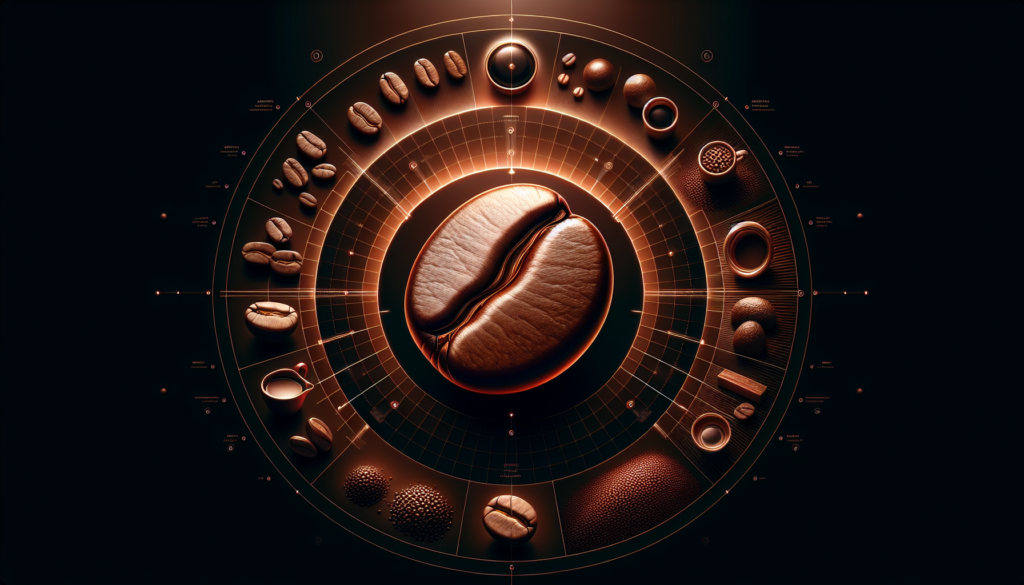Have you ever wondered what sets arabica and robusta espresso beans apart? When it comes to the world of coffee, these two varieties are often mentioned, but understanding their unique characteristics can be a bit confusing. Fear not, as this article will shed light on the key differences between arabica and robusta espresso beans. From taste profiles to growing conditions, we will explore the distinct qualities that make each type of bean a favorite among coffee enthusiasts. So grab your favorite mug, sit back, and let’s unravel the fascinating world of arabica and robusta espresso beans.
Origin and History of Arabica and Robusta Espresso Beans
Arabica Espresso Beans
Arabica espresso beans are derived from the Coffea arabica plant, which is native to the highlands of Ethiopia. This species of coffee plant is believed to be the first to be cultivated for its beans, with its origins dating back thousands of years. Arabica beans were eventually spread throughout Arabia and the surrounding regions, giving rise to their name. Today, Arabica beans are grown in various parts of the world, including Latin America, Africa, and Asia.
Robusta Espresso Beans
Robusta espresso beans come from the Coffea canephora plant, which is native to central and western sub-Saharan Africa. Despite being discovered after Arabica beans, Robusta beans quickly gained popularity due to their higher caffeine content and their ability to thrive in lower altitudes and warmer climates. Robusta beans are mainly grown in countries such as Vietnam, Brazil, and Indonesia.
Plant Characteristics
Arabica Espresso Beans
Arabica plants are characterized by their larger leaves and more delicate structure compared to Robusta plants. They generally reach a height of 2-4 meters and have a lower yield per tree. The Arabica beans themselves are oblong in shape, with a characteristic “S” curve. The plant is highly susceptible to diseases and requires particular care and maintenance throughout its growth.
Robusta Espresso Beans
In contrast, Robusta plants are hardier and more resistant to diseases, making them easier to cultivate. They have a smaller stature, typically growing to 4-6 meters in height. The leaves of the Robusta plant are smaller and have a waxy texture. Robusta beans are rounder and have a straighter shape compared to Arabica beans.

Growing Conditions
Arabica Espresso Beans
Arabica beans thrive in higher altitudes, around 600 to 2000 meters above sea level. They prefer a cooler climate with temperatures ranging between 15-24°C. Arabica plants require a significant amount of rainfall, usually around 2000-3000 mm per year, and well-drained soil. The high altitude and specific environmental conditions contribute to the slow maturation of Arabica beans, resulting in their desirable flavors.
Robusta Espresso Beans
Robusta beans, on the other hand, can be grown at lower altitudes, usually between 200 to 800 meters above sea level. They are more tolerant of warmer climates and can withstand temperatures as high as 32°C. Robusta plants require less rainfall, around 1500-2500 mm per year, and can adapt to a wider range of soil conditions. The quicker maturation of Robusta beans due to the lower altitude and different growing conditions translates to a more straightforward cultivation process.
Caffeine Content
Arabica Espresso Beans
Arabica beans contain lower levels of caffeine compared to Robusta beans. On average, Arabica beans have a caffeine content of approximately 1.2% to 1.5%. The lower caffeine content is often preferred by individuals sensitive to caffeine or those who prefer a milder stimulant effect.
Robusta Espresso Beans
Robusta beans have a significantly higher caffeine content compared to Arabica beans. On average, Robusta beans contain about 2.2% to 2.7% caffeine. This higher caffeine content contributes to the robust and intense flavor often associated with Robusta espresso.

Flavor Profile
Arabica Espresso Beans
Arabica beans are renowned for their complex and varied flavor profiles. They offer a wide range of flavors, which can include fruity, floral, nutty, and chocolatey notes. Arabica espresso is often described as having a smooth and well-balanced flavor with subtle acidity.
Robusta Espresso Beans
Robusta beans have a more robust and strong flavor profile compared to Arabica beans. They tend to have earthy, woody, and sometimes peanut-like flavors. The strong flavor is often accompanied by a bitter and slightly harsh taste. Robusta espresso is known for its full-bodied and bold flavor.
Acidity
Arabica Espresso Beans
Arabica beans typically have a higher acidity level compared to Robusta beans. The acidity of Arabica espresso is often described as bright and vibrant. This acidity contributes to the complexity and liveliness of the flavor profile.
Robusta Espresso Beans
Robusta beans have a lower acidity level compared to Arabica beans. The acidity in Robusta espresso is usually milder and less pronounced. Instead, Robusta coffee tends to have a fuller and heavier mouthfeel.
Body and Crema
Arabica Espresso Beans
Arabica espresso beans often produce a smoother and lighter-bodied drink with a silky mouthfeel. When properly brewed, Arabica espresso is known for its exceptional crema, which is the golden-brown foam that sits on the surface of the espresso shot.
Robusta Espresso Beans
Robusta beans produce a much heavier and more full-bodied espresso. The higher oil content in Robusta beans contributes to a thicker and creamier mouthfeel. However, the crema produced by Robusta espresso is usually less pronounced and lighter in color compared to Arabica espresso.
Price and Availability
Arabica Espresso Beans
Arabica beans are generally more expensive and considered to be of higher quality compared to Robusta beans. The high demand for Arabica beans, coupled with the labor-intensive cultivation and specific growing requirements, contributes to their higher price. Arabica espresso beans can be found in specialty coffee shops, gourmet stores, and online retailers.
Robusta Espresso Beans
In contrast, Robusta beans are generally more affordable and readily available. Their lower production cost and higher yield make them a cost-effective option for espresso blends. Robusta espresso beans can be found in various coffee shops, supermarkets, and online platforms.
Preferred Use in Blends
Arabica Espresso Beans
Arabica beans are often the preferred choice when it comes to creating espresso blends. With their diverse flavor profiles and lower bitterness, Arabica beans add complexity and balance to the blend. They can enhance the aroma, acidity, and overall richness of the espresso.
Robusta Espresso Beans
Robusta beans are commonly used as a component in espresso blends to add body, crema, and extra caffeine kick. The robust and earthy flavors of Robusta beans contribute to the strength and intensity of the blend. However, excessive amounts of Robusta beans can result in a more bitter and unbalanced taste.
Health Benefits and Risks
Arabica Espresso Beans
Arabica espresso beans offer various health benefits when consumed in moderation. They are a rich source of antioxidants, which help protect the body against oxidative stress and may decrease the risk of certain chronic diseases. The moderate caffeine content in Arabica espresso can also provide a temporary increase in alertness and mental focus.
Robusta Espresso Beans
Like Arabica beans, Robusta espresso beans also contain antioxidants and have a stimulating effect due to their higher caffeine content. However, excessive consumption of Robusta espresso may lead to negative side effects such as increased heart rate, agitation, and digestive issues. It is important to consume Robusta espresso in moderation and be mindful of individual caffeine sensitivities.
In conclusion, Arabica and Robusta espresso beans have distinct characteristics that set them apart. Arabica beans are known for their complex flavors, higher acidity, and milder stimulant effect, while Robusta beans offer a robust flavor, higher caffeine content, and fuller body. Both types of beans have their place in the world of espresso, whether it be in single-origin offerings or expertly crafted blends. Ultimately, the choice between Arabica and Robusta espresso beans depends on personal preferences and the desired flavor experience.

